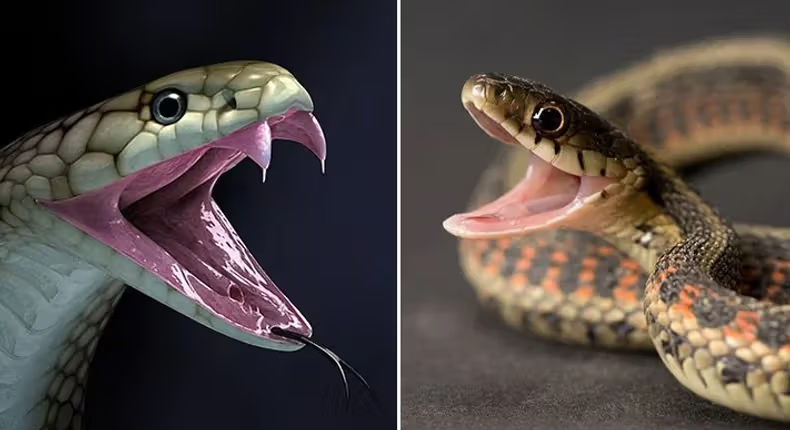< 1 mn read
1. Physical Characteristics
- Venomous Snakes: Often have triangle-shaped heads, elliptical pupils, and heat-sensing pits between their eyes and nostrils.
- Non-Venomous Snakes: Typically have round heads and round pupils. They may have vibrant colors for warning or muted colors for camouflage.
2. Behavior
- Venomous Snakes: Tend to be more aggressive and may display defensive behaviors such as hissing or coiling. For example, rattlesnakes shake their tails to produce a warning sound.
- Non-Venomous Snakes: Generally more docile and prefer to flee rather than confront. They are less likely to exhibit aggressive postures.
3. Location
- Venomous Snakes: Often found in specific environments like deserts, grasslands, or tropical forests, where their prey is abundant.
- Non-Venomous Snakes: Can inhabit a variety of settings, including forests, grasslands, and urban areas.
4. Pupils
- Venomous Snakes: Most have vertical, slit-like pupils, similar to a cat’s eye. Some, like the coral snake, have round pupils, so this feature isn’t foolproof.
- Non-Venomous Snakes: Typically have round pupils.
Important Note: While these characteristics can help with identification, it’s essential to avoid close encounters with any snake. Always exercise caution and seek professional help if you encounter a snake.

